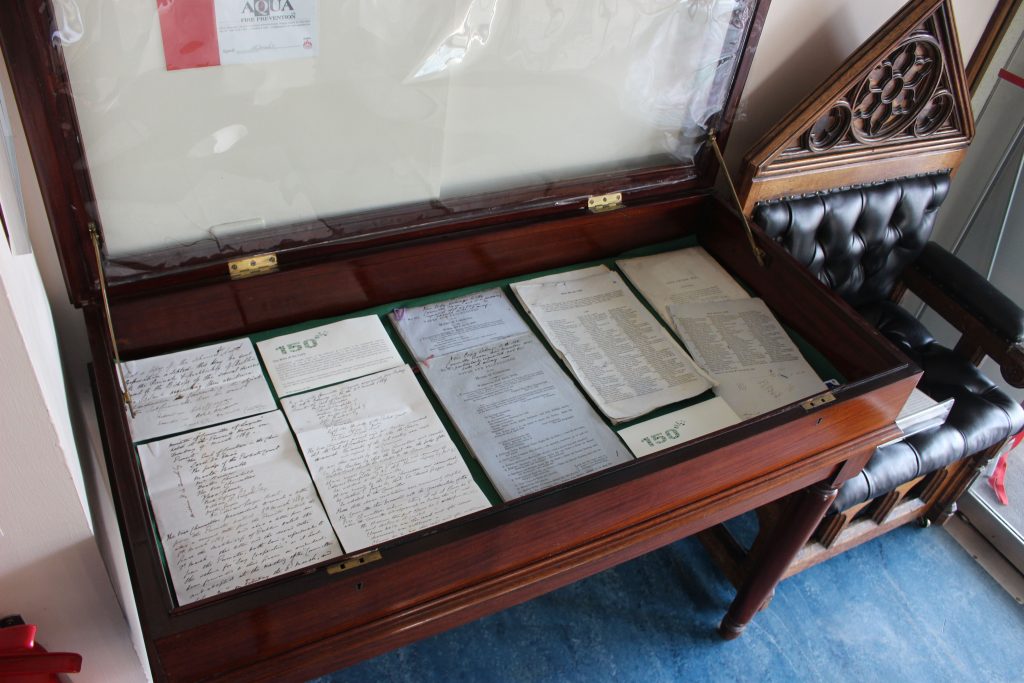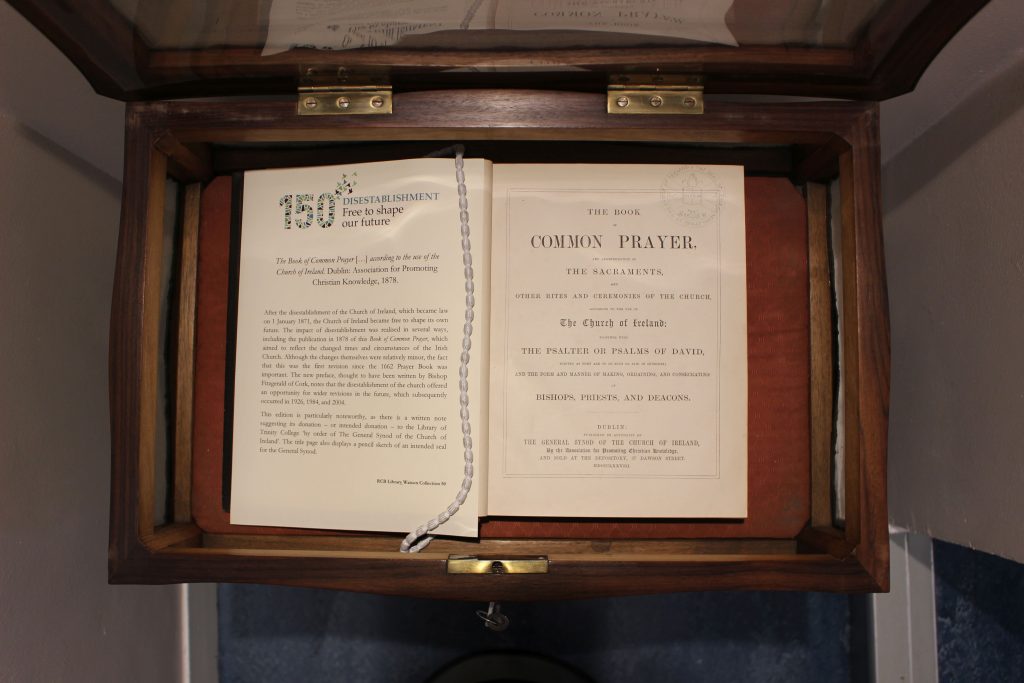Marking Disestablishment 150: display at RCB Library
Under the terms of the Irish Church Act (32&33 Vic. c. 42 sect. 2) of 26 July 1869, which passed into law in 1871, the union between Church and State in Ireland that had existed since the Reformation was dissolved, and the Church of Ireland ceased to be established by law: leaving it ‘free to shape her future course, independent of state control’ (Journal of the General Convention, 1870, With the Statutes Passed and An Appendix … edited by the Revd Alfred T. Lee, Dublin, 1871, pp v–vi).
A new display of materials relating to this momentous event has just commenced at the RCB Library which is the Church of Ireland’s record repository and reference library. The exhibition will continue on a rotational basis throughout the anniversary period.
Many of the materials – created both immediately before and after the enactment of 32&33 Vic. c. 42 sect. 2 – were formerly securely stored in a metal trunk labelled ‘General Convention Box’, housed in the central offices of the Representative Church Body (initially at 52 St Stephen’s Green, and more recently at Church of Ireland House in Rathmines) before their transfer to the Library in 1998 where they were accessioned in detail as the GC/ series). Collectively the collection charts the evolutionary story of the state–run Church to an independent, largely voluntary and minority denominational Church, from the perspective of those who achieved tasked with making that transition happen. Click here to see the catalogue list.

The initial display which may be viewed in the Library’s entrance foyer includes a selection of the papers, minutes and resolutions of the Committee of Laymen as it met in the build–up to the legislation going through – practically 100 years to the day. These are representative of the early influence of the laity in the general deliberations which re–structured the Church and ensured that the laity would become one of the three orders of the reconstituted institution – on an equal footing with bishops and clergy.
From March 1869, a Consulting Committee (which the Committee of Laymen fed into) began the process by hosting an initial church conference of archbishops, bishops, clergy and laity in April 1869. This gradually evolved into a Standing Committee and related General Committee or Church Committee, which was entrusted to organise the General Convention of 1870. The Convention was held in open session between 15 February and 4 November 1870 at the Ancient Concert Rooms, Great Brunswick Street (now Pearse Street), and represented the all–island Church. Every diocese and parish sent clerical and lay delegates who collectively set about the lengthy and painstaking work of drafting a new constitution, producing its standing orders, and completely overhauling the financial structures. The Convention would evolve into the Representative Body from 1870.
Also on display are some of the draft ‘Votes and Proceedings’ parliamentary papers that document the various bills and amendments that lead to the Irish Church Act as they were going through both Houses of Parliament in London, and scrutinised and annotated by the Church of Ireland’s Operating Committee over in Dublin. Strict instructions were given to committee members that these documents belonged ‘to the Committee Room’ and that ‘no person should take [them] away’ as the display reveals.

Finally, a sample prototype copy of the first edition of the Book of Common Prayer published after Disestablishment ‘by order of The General Synod of the Church of Ireland’ in 1878 is also shown. In the aftermath of the Church’s changed status one of the major tasks was to reflect the changed times and circumstances of the Irish Church in the text of its prayer book. Presentation copies sealed with the Seal of the General Synod were ordered for various other Anglican Churches and bishops around the world, as well as the Robinson Library in Armagh, Archbishop Marsh’s Library in Dublin, and the Library of Trinity College Dublin. The volume on display is particularly noteworthy for a written note suggesting its donation – or intended donation – to the Library of Trinity College on the title page, with a pencil sketch of the intended seal for the General Synod and comes from the Library’s Watson Collection of prayer books and related items.